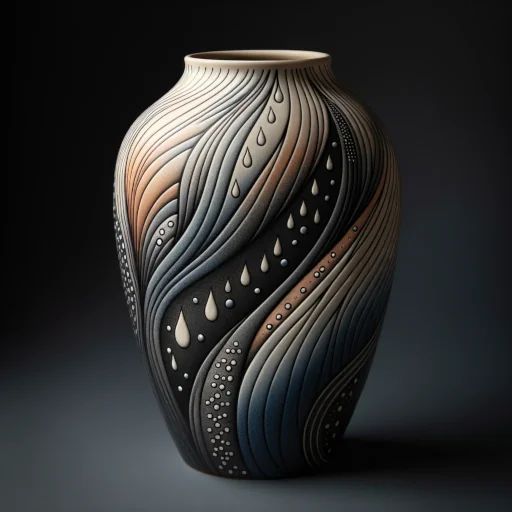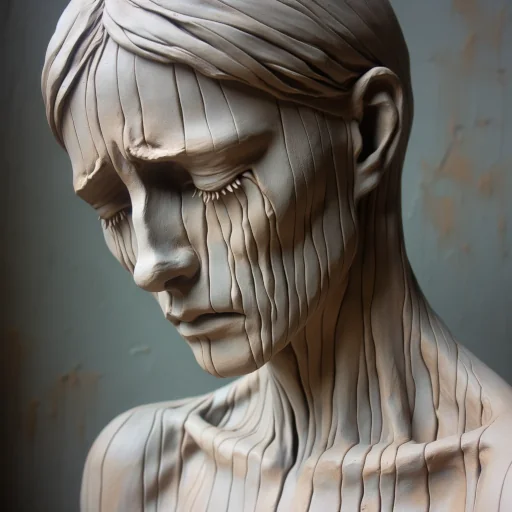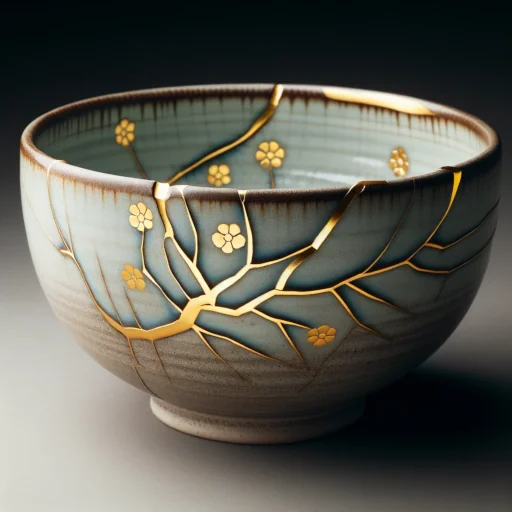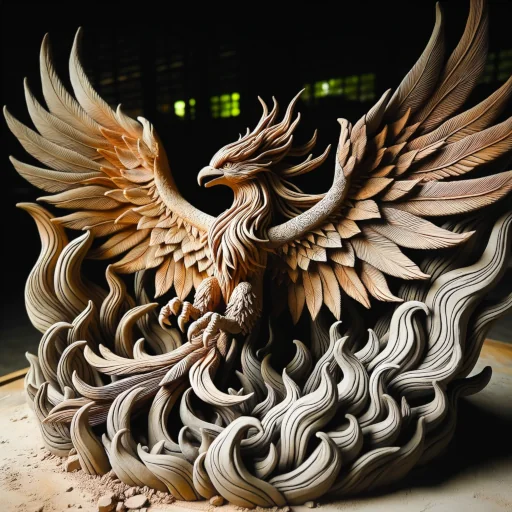In a time when mental health has taken center stage in societal conversations, the role of art as a therapeutic avenue is more relevant than ever. Ceramic art, in particular, stands out as a potent medium for self-expression and healing, especially for those grappling with trauma or mental illness. This article delves into the compelling narrative of ceramic art’s therapeutic potential, exploring how it not only enriches our creative landscape but also offers a lifeline to those in emotional and psychological distress.
A Personal Story
Imagine a high school student navigating the labyrinth of adolescence, a period often marked by emotional turbulence and identity crises. Now, add to that a debilitating struggle with depression and anxiety. That was my son, a young man who felt so lost that he described his daily life as “wading through a fog of incomprehensible emotions.” He was sinking, and as a parent, the feeling of helplessness was overwhelming.
Then came the day he discovered ceramic art. It wasn’t a planned excursion; he stumbled upon an art class in high school. Intrigued, he decided to give it a try. The moment he sat down and started working with clay, something extraordinary happened.
His hands, which had often been clenched in anxiety, found a new language in the malleable clay. As he shaped and molded the material, he realized he was doing the same with his tangled emotions, giving them form, texture, and ultimately, a sense of purpose.
Over the weeks and months that followed, the art studio transformed into his sanctuary. It became a sacred space where he could shed his worries and fears, immersing himself fully in the act of creation.
The transformation was nothing short of miraculous. His art pieces began to reflect intricate designs and profound emotions, and parallelly, his mental well-being took a turn for the better. He was not just creating art; he was creating a new narrative for his life, one where he was the artist and not just the subject.
This is not just a story of artistic discovery; it’s a testament to the transformative power of ceramic art as a form of therapy. It’s about how a simple act of molding clay can reshape a life, offering a beacon of hope and resilience to those navigating the complexities of mental health.
The Emotional Alchemy of Clay: Processing Emotions Through Ceramic Art

Ceramic art serves as a unique emotional conduit, enabling individuals to process complex feelings like grief, anger, and sadness through the act of creation.
Supporting Evidence
Examples of Emotional Processing through Ceramic Art
- Grief: In art therapy sessions, individuals who have lost loved ones often create memorial urns or sculptures. The act of molding clay becomes a meditative process, allowing them to channel their grief into a physical form. Over time, the finished piece stands as a tribute to the departed, as well as a milestone in the creator’s own journey through grief.
- Anger: The physicality of working with clay, pounding, kneading, and shaping, offers a safe outlet for pent-up anger. Artists have described the experience as “hitting a reset button” on their emotions, allowing them to express and then release their anger through their creations.
- Sadness: Creating ceramic art can be a solitary endeavor, providing a quiet space for introspection. Artists dealing with sadness often produce pieces that are not just visually striking but also emotionally resonant. The art becomes a form of non-verbal communication, capturing the nuances of their emotional state.
Quotes From My Son Over The Years
- “The clay has a way of listening. It takes on your emotions and helps you understand them from a new perspective.”
- “Ceramic art is not just about creating something beautiful. It’s a form of emotional archaeology, digging deep into the layers of the subconscious.”
- “When you’re working with clay, you’re not just shaping it; it’s shaping you. It’s a dialogue between you and your emotional self.”

By exploring the emotional dimensions of ceramic art, we not only gain insights into its therapeutic potential but also deepen our understanding of the human experience. The clay serves as both canvas and confidant, absorbing the emotional imprints of its creator and reflecting them back in a form that can be seen, touched, and understood.
From Clay to Catharsis: Coping with Life’s Challenges Through Ceramic Art
Ceramic art serves as a transformative medium, offering individuals a creative outlet to cope with life’s difficult experiences, such as trauma, illness, and loss.
Supporting Evidence
Examples of Coping with Difficult Experiences through Ceramic Art
- Trauma: Veterans and survivors of abuse have turned to ceramic art as a form of trauma therapy. Creating pieces that symbolize their experiences or emotions allows them to externalize their trauma, making it easier to confront and process.
- Illness: Patients undergoing long-term medical treatments have found solace in ceramic art. Crafting pieces while in recovery can serve as a positive distraction and a means of regaining a sense of control during uncertain times.
- Loss: Individuals dealing with the loss of a relationship, job, or any significant life change often use ceramic art to navigate their feelings. Creating memorial pieces or abstract representations of their emotions helps them to find closure or acceptance.
My Quotes
- “Ceramic art provides a tactile form of storytelling. People can narrate their difficult experiences through the clay, making the intangible tangible.”
- “The act of creating something from a lump of clay can be incredibly empowering, especially for those who feel powerless in the face of life’s challenges.”
- “Clay doesn’t judge; it simply receives. That unconditional acceptance makes it a powerful medium for coping with adversity.”

Through the lens of ceramic art, we can explore the resilience of the human spirit in the face of adversity. Whether it’s trauma, illness, or loss, the clay offers a sanctuary, a place where pain can be molded into something meaningful, providing both solace and strength.
Resilience Through the Potter’s Wheel: How Ceramic Art Fortifies the Human Spirit
Ceramic art goes beyond mere artistic expression; it serves as a crucible for building resilience, particularly in individuals who have faced trauma or adversity.
Supporting Evidence
Examples of Building Resilience through Ceramic Art
- Overcoming Trauma: Individuals who have survived natural disasters have used ceramic art to rebuild their lives, one piece at a time. The act of creating something new out of raw materials serves as a metaphor for their own resilience and ability to start anew.
- Facing Adversity: People who have overcome challenges like poverty or discrimination have found empowerment in ceramic art. The process of mastering complex techniques and completing intricate projects instills a sense of accomplishment and resilience.
- Emotional Resilience: Those dealing with emotional struggles have reported increased resilience through regular engagement with ceramic art. The act of turning a fragile piece of clay into a durable art object serves as a tangible representation of their own emotional fortitude.
Quotes from my Son and I
- “Resilience is like clay, both can be molded by experience, yet both have the innate strength to hold form.”
- “Ceramic art teaches you patience, focus, and the ability to bounce back from mistakes, key components of resilience.”
- “When you work with clay, you learn to adapt and problem-solve, skills that are crucial for building resilience in life.”

Ceramic art offers more than just aesthetic pleasure; it provides a tangible pathway to resilience. Whether it’s overcoming trauma, facing adversity, or simply navigating the ups and downs of everyday life, the act of molding clay can mold us in return, fortifying our inner strength and resilience.
Why This Matters: The Transformative Power of Ceramic Art
The Living Proof: My Son’s Journey
If you’re looking for evidence of the transformative power of ceramic art, you need not look further than my own son. During a tumultuous period in his high school years, he grappled with debilitating depression and anxiety. It was a fog of emotions he couldn’t navigate, and as a parent, the feeling of helplessness was overwhelming. But then, ceramic art entered his life.
The Sanctuary of the Art Studio
The art studio became more than just a room filled with clay and pottery wheels; it became his sanctuary. Here, he could translate his tangled emotions into tangible forms, molding the clay as he reshaped his own mental landscape. The transformation was miraculous. His art began to reflect intricate designs and profound emotions, and parallelly, his mental well-being took a turn for the better.
More Than Just Art: A New Narrative
This is not just a story of artistic discovery; it’s a testament to the transformative power of ceramic art as a form of therapy. It’s about how a simple act of molding clay can reshape a life, offering a beacon of hope and resilience to those navigating the complexities of mental health.
So, why does this matter? Because art has the power to heal, to transform, and to offer solace in times of emotional and psychological distress. My son’s journey stands as living proof of the comfort and improvements that ceramic art can bring into one’s life.
Conclusion: The Transformative Journey Awaits
As we’ve explored throughout this article, ceramic art stands as a powerful medium for self-expression and healing, particularly for those who have navigated the stormy seas of trauma or mental illness. It’s not just about creating beautiful objects; it’s about creating a better, more resilient version of oneself.
If you’ve ever felt the weight of emotional burdens or faced life’s challenges head-on, consider embarking on a transformative journey through ceramic art. Whether you’re a seasoned artist or a complete novice, the potter’s wheel welcomes all. Take a class, visit an art therapy studio, or simply start molding clay at home. You’ll be amazed at how this ancient art form can offer modern solutions for emotional well-being and resilience.
Share the Journey
If this article resonated with you or you think it could benefit someone you know, please don’t hesitate to share it. By spreading the word, you’re not just sharing an article; you’re sharing the possibility of transformation and healing through ceramic art.
So, why not take that first step? Discover the therapeutic potential of ceramic art and let your hands tell your story. You might just find that the person who emerges from the art studio is stronger, happier, and more resilient than the one who walked in.
This concludes the article, capturing the essence of ceramic art as a tool for emotional and psychological well-being. Feel free to share it far and wide, and let’s make the world a more resilient place, one clay sculpture at a time.






